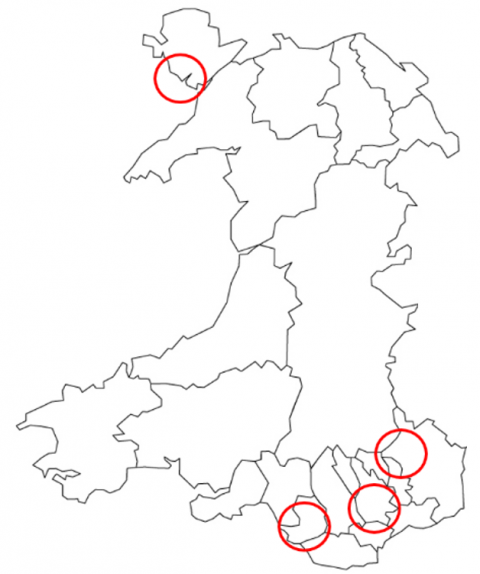Comparing on-site preservation techniques for fresh Welsh birch sap for use in artisan products by local businesses
The Forestry Statistics for 2019 indicate that birch is the third most common broadleaf tree species in Wales covering an estimated 2,000 ha of the Welsh Government Forest Estate (NRW) and 11,000 ha of private woodland, much of which is on farms. Since these trees are not intended for timber, they are potentially available as a source of other (non-wood) products such as birch sap.
Birch sap contains a small amount of sugar and can be reduced into syrup, in a similar manner to maple syrup. In Alaska and Canada birch syrup production is very small scale and considered a gourmet product which can sell at up to five times the price of maple syrup. Some of this higher price is because birch sap has half the sugar content of maple sap so more sap is needed but it also has a different composition to maple syrup which gives it a unique flavour.
The key barrier for commercial birch sap production is that it is a highly perishable and only has a shelf life of 24 hours at 5ᵒC. It needs to be treated immediately after tapping to make it more stable for storage and transportation prior to off-site processing in commercial kitchens. Removing this barrier to market during harvesting would allow foresters and farmers to consider birch syrup as a viable diversification option.
This project took place across four sites in Wales and focused on three different production methods and will analyse which method is most effective at turning birch sap into a concentrate at different scales of production.
- Outdoor wood stove: The sap is boiled down in evaporating pans to a sugar concentration of below 20%.
- Reverse osmosis: The sap is pushed through a vacuum pumps and micro-porous osmosis filters which brings the sap down to around 15% sugar concentration.
- Urn: An electric thermostatically controlled urn heats the syrup and reduced it to a sugar concentration of below 20%.
These methods were compared on:
- Capital set-up costs
- Preservation time to produce concentrate from sap
- Logistics
- Operating costs – in particular fuel costs
- Product quality e.g. total sugar content, colour and taste
This trial was the first in Wales to focus specifically on birch sap production and has provided good guidance on the tapping of birch trees and immediate post-harvest sap preservation. The project has also raised an awareness on non-timber income opportunities from woodland. Please see all project details below.

